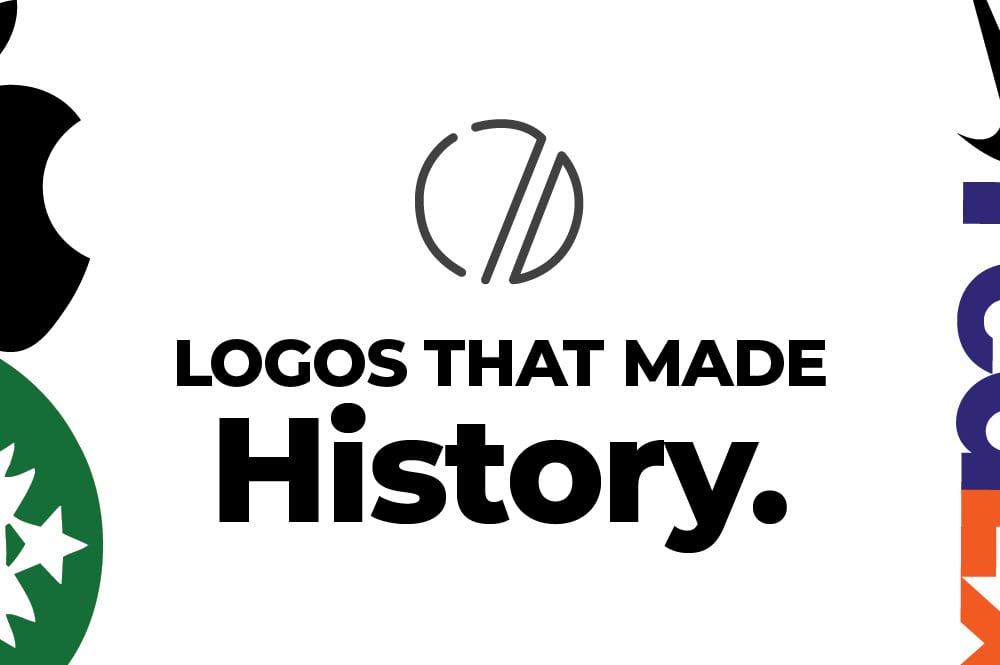 As a business owner, you’ve recognized a need within a particular niche or among a group of people. And it is your brilliant, never-before-seen ideas that will solve this need in a creative way. So, you have a valuable skill or product to offer, a hard-working team, and perhaps even a name to represent your company. And now you need an image. Your business’s logo is its face– the first impression you’ll make upon potential clients and customers. And it should emulate everything for which you stand. So, needless to say, great logo design is no simple task. That’s why in this article, we’ll take a look at what makes a logo successful, some of the best logos in history, and what we can learn from their genius.
As a business owner, you’ve recognized a need within a particular niche or among a group of people. And it is your brilliant, never-before-seen ideas that will solve this need in a creative way. So, you have a valuable skill or product to offer, a hard-working team, and perhaps even a name to represent your company. And now you need an image. Your business’s logo is its face– the first impression you’ll make upon potential clients and customers. And it should emulate everything for which you stand. So, needless to say, great logo design is no simple task. That’s why in this article, we’ll take a look at what makes a logo successful, some of the best logos in history, and what we can learn from their genius.What makes a logo successful?
You’ll notice a few trends in these ultra-famous logos, which we are about to discuss. They each have three essential characteristics that make them so powerful:
- They are immediately recognizable and distinguished. A logo should represent one’s brand in a way that sends a message of individuality so it can stand out in a crowd. And it should have an element of simplicity that makes it memorable.
- They have a timeless and professional look. This helps them build trust among their consumers. No matter the type of company, a logo should be concise and sophisticated so to convey a message of authority and know-how within a particular area.
- A sleek, adaptable, and classic design seems to be a common theme among the logos we know and love. They all look great at any size, in any context, and can effortlessly adapt to cultural trends.
History’s Best Logos:
- Apple. Apple is undoubtedly one of the most recognizable brands in the world. Its products have paved the way for computerized technology, reimagining our future and the way we work. And they’ve delivered it all with sleek and fashionable design– their logo being no exception. Apple, however, began with an image you might not recognize. Its first logo in 1976 depicted Isaac Newton under a tree with an apple hanging from it. While this classic image well-suited the inventiveness of the company, it was hardly the message of modernity and sleekness for which Apple strove. And so, just a year later, the logo was changed to the rainbow-striped (to commemorate the first color display computer), partially eaten apple we’d recognize today. This was the longest-lived iteration of the Apple logo, repping the brand until 1998. However, when its rainbow colors were replaced with a sleeker coloring, their message shifted to focus on Apple products’ user-friendliness and modern style. Finally, if you were wondering about that bite in the apple, we like to assume the graphic design genius of adding a bit of negative space and an interesting element in otherwise very basic design. So what’s the lesson here? The Apple logo matches the design of its sleek, efficient, and intelligent products. And in its simplicity, this shape is easily recognized just about anywhere and in any size. Try to mimic this for your own image.
- Google. Google’s primary-colored logo was created in 1998 with a standard font. And since then, it has only undergone minor changes. (Perhaps this has aided their success in extraordinary recognizability.) However, in 2015, the typeface was slightly changed for a modernized and custom look. The colors barely changed either– simply made more vibrant and saturated. So what’s Google’s key to success? What we love most about Google’s logo design as well as what we suspect lead to their distinguished look, is its simplicity. Google is purposed for availability to all. It is their mission to connect people (all people) to all sorts of information. That’s why their use of primary colors, a stark pop of green, negative space, and simple lettering is so conducive to who they are. Plus, one of the Google logo’s best traits is its adaptability. Google is famed for its themed logos to commemorate special events and annual holidays. With each happening, you’ll be sure to find it celebrated on the Google logo. So what’s the lesson here? We suggest you consider the typography of your logo and how it may represent your brand. What kind of font, spacing, and arrangement will demonstrate best all that you do?
- Nike. In 1971, graphic design student Carolyn Davidson designed and sold the iconic Nike swoosh for the bargain price of $35 to Nike’s co-founder, Phil Knight. But where was she inspired to create such a fantastic logo? This athletic apparel brand, which has outfitted the world’s best athletes for decades, found it fitting to name themselves after the Greek goddess of victory, Nike. And so, the student designer was inspired to create the swoosh in resemblance to the goddess’s wing. It was also designed to convey speed, acceleration, and power. What we love most about the Nike logo is 1.) its inherent simplicity, and 2.) its powerful message. First of all, that Nike swoosh is no intricate design with complex detailing. It is very simple, easy to recreate, and useful in any format or size. However, its message is full of depth and meaning. It is affirming, signifying one saying “yes” (to their brand, of course), and the shape conveys a sense of motion. The lesson here? Brainstorm how you can use shape to tell the story of your product, brand, and mission. It could even convey some sort of movement or evoke action in your customers.
- Coca-Cola. The original 1886 Coca-Cola logo and its classic script lettering have seen little change over these many years. However, in 1956 America’s favorite beverage introduced red and white to its famous logo. Since this addition, Coca-Cola has become one of the most iconic and classic brands of America. Its image is even considered a part of our culture for two fundamental reasons. First, the brand’s script is timeless, old fashioned, and now evokes nostalgia across generations. And second, the brand’s use of red has made it particularly exceptional. As red evokes excitement, energy, and passion, the color has surged Coca-Cola into its role as a leading American brand. Red is also known to stimulate one’s appetite, which is a perfect asset to a soda company. So, what is there to learn from this American icon? We suggest mimicking Coca-Cola in its use of color psychology when deciding on your logo’s colors. What sort of message are you hoping to pass on? And to what kind of audience? Do your research on the emotional power of colors and implement them accordingly!
- Mercedes. While the logos we’ve previously discussed have mainly remained the same since its inception, the Mercedes brand has undergone several modifications over the years. In 1902, the logo first appeared with just the word “Mercedes.” However, it was not long until the three-point star we know today came about in the logo’s second rendition. Ever wondered about the story behind that star? It is said to have been inspired by a similar star that founder Gottlieb Daimler drew in a postcard to his wife. Eventually, this star came to also represent land, sea, and air, the three arms of the automotive industry. Today, the logo is clean, distinguished, and elegant to reflect the luxury of a Mercedes vehicle. And the Mercedes typeface is purposefully thin and curved, which conveys elegance. So, what can you take away from the Mercedes design? While your logo may not have as much intricate meaning as that of Mercedes, it can still be used to show off who you are. Remember that every typeface has a unique personality. Use it in accordance with that of your own company!
So what do these famous logos all have in common? Each involves the perfect use of colors, shape, and lettering, all while keeping it simple. Pay attention to not only what you want people to know about your logo, but how you want them to feel when they see it. And whatever you do, carefully consider the aesthetic of your brand as it will be the leading image of your company.
Now, put your creative mind to work and design a logo! Or if this all sounds rather intimidating…you could reach out to our creative team for a little help. Our graphic designers are experts in all things logos. Call us today for an image that represents all that you do in a meaningful, useful, and unique way!







